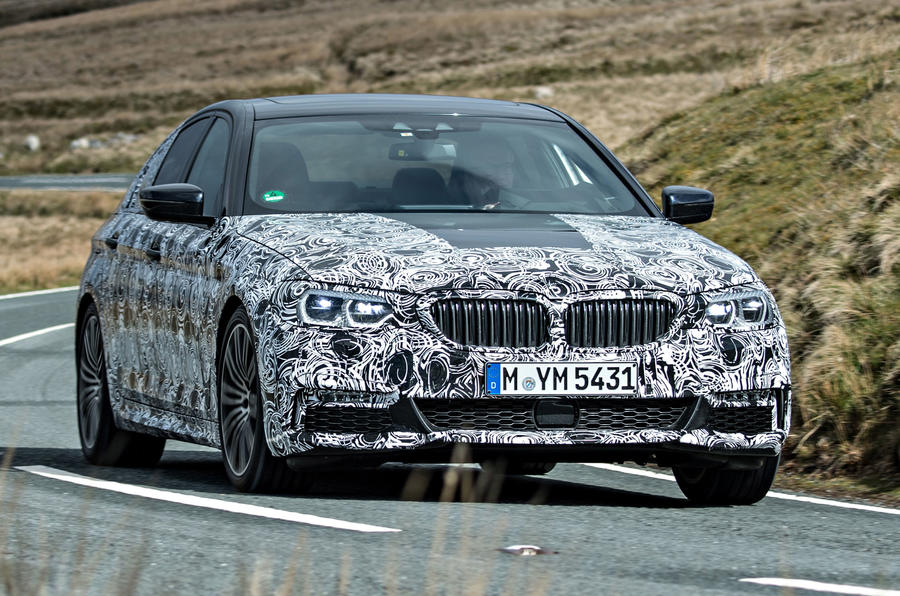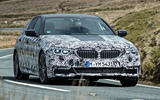What is it?
Underneath the light disguise of the BMW prototype you see here lies the seventh-generation 5 Series saloon – a car described as being new from the ground up and, as it has been since its inception way back in 1972, one that's crucial to the company's continued drive for greater volumes, profit and success.
We've now driven the 2017 BMW 5 Series in production guise. Click here to read about it
The production version of the new 5 Series, codenamed G30, isn’t planned to be unveiled until October. However, we’ve now driven a trio of prototypes over some challenging roads in Wales – the very same network of coarse-chip blacktop that the head of BMW’s chassis development, Jos van As, and his team have been using recently to fine-tune the handling attributes of the new executive saloon, which will come up against some stiff competition in the form of the Audi A6, Jaguar XF and Mercedes-Benz E-Class when it goes on sale in the UK early next year.
Click here for the full tech specs on the 2017 BMW 5 Series
Although BMW is holding back on many of the details of the new 5 Series until closer to its launch, it has provided us with an insight into its advanced new chassis, which is not only a brand new development but also comes with a new set-up aimed at providing the car with a broader range of attributes than ever before. “At one end of the scale, we’ve succeeded in making it more responsive and increased its agility," says van As, "while at the other end, it now provides greater comfort and refinement.”
In terms of dimensions, the 5 Series has grown, if only slightly. The increases in length, width and height are incremental and mostly aimed at increasing rear seat accommodation. As before, BMW will build the new car with two distinct wheelbases, including a long-wheelbase version exclusively for the Chinese market. The simple taped disguise of the prototypes we drove hides a car with the same basic proportions of its predecessor. But while the appearance may be described as evolutionary, it adopts some more revolutionary measures in other areas of its design.
Key to the changes to the traditionally strong-selling BMW model is a new body structure first unveiled on the 7 Series last year. Known under the working title CLAR, a play on the words 'cluster architecture', it incorporates more aluminium within its floorpan and bulkheads than the earlier 35up platform used by the outgoing F10 5 Series. It also uses a greater number of aluminium castings than the earlier structure.
Although it does without the more expensive carbonfibre components used by its larger sibling, BMW claims the new structure and other weight-saving measures, including a lighter wiring loom, have resulted in a reduction in kerb weight of up to 100kg, depending on the model. That’s not all, though. CLAR also provides the new 5 Series with significant increase in torsional rigidity and the basis for a completely new suspension philosophy.
The new set-up, which will be largely mirrored on the next 3 Series, adopts a fully electric steering system, both in standard rear-wheel drive and four-wheel-drive xDrive models. There’s also a new mounting system for the steering that’s claimed to provide the rack with improved rigidity and therefore greater feel and increased feedback.
The new steering system is allied to completely reworked double wishbone front suspension that uses a greater number of aluminium components for a reduction in unsprung weight. Due to its inherent design and the fact that its lower arms are largely freed from supporting any lateral forces, BMW says the new set-up provides a more integrated solution for a sportier drive.

















Join the debate
Add your comment
Confused
Cat 'o' 9 tails
Adaptive suspension
Jag seem to be able to do this as standard, but then their iphone interface isn't as good; and that appears to be what people really want nowadays.